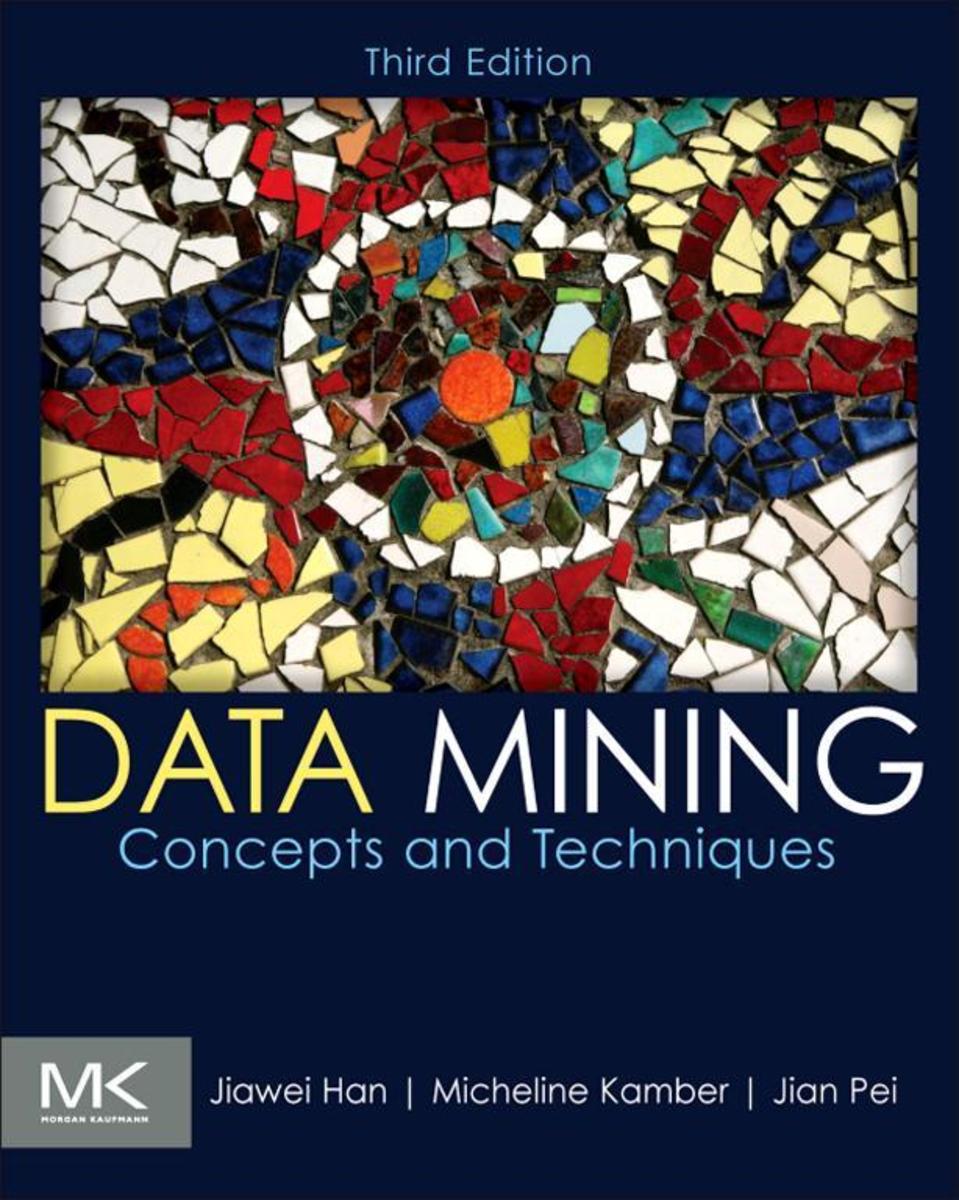
- Version 3
- Download 24
- File Size 20m
- Create Date December 12, 2017
- Download
The chapters of the third edition are described briefly as follows, with emphasis on the new material.
Chapter 1 provides an introduction to the multidisciplinary field of data mining. It discusses the evolutionary path of information technology, which has led to the need for data mining, and the importance of its applications. It examines the data types to be mined, including relational, transactional, and data warehouse data, as well as complex data types such as time-series, sequences, data streams, spatiotemporal data, multimedia data, text data, graphs, social networks, and Web data. The chapter presents a general classification of data mining tasks, based on the kinds of knowledge to be mined, the kinds of technologies used, and the kinds of applications that are targeted. Finally, major challenges in the field are discussed.
Chapter 2 introduces the general data features. It first discusses data objects and attribute types and then introduces typical measures for basic statistical data descrip- tions. It overviews data visualization techniques for various kinds of data. In addition to methods of numeric data visualization, methods for visualizing text, tags, graphs, and multidimensional data are introduced. Chapter 2 also introduces ways to measure similarity and dissimilarity for various kinds of data.
Chapter 3 introduces techniques for data preprocessing. It first introduces the con- cept of data quality and then discusses methods for data cleaning, data integration, data reduction, data transformation, and data discretization.
Chapters 4 and 5 provide a solid introduction to data warehouses, OLAP (online ana- lytical processing), and data cube technology. Chapter 4 introduces the basic concepts, modeling, design architectures, and general implementations of data warehouses and OLAP, as well as the relationship between data warehousing and other data generali- zation methods. Chapter 5 takes an in-depth look at data cube technology, presenting a detailed study of methods of data cube computation, including Star-Cubing and high- dimensional OLAP methods. Further explorations of data cube and OLAP technologies are discussed, such as sampling cubes, ranking cubes, prediction cubes, multifeature cubes for complex analysis queries, and discovery-driven cube exploration.
Chapters 6 and 7 present methods for mining frequent patterns, associations, and correlations in large data sets. Chapter 6 introduces fundamental concepts, such as market basket analysis, with many techniques for frequent itemset mining presented in an organized way. These range from the basic Apriori algorithm and its vari- ations to more advanced methods that improve efficiency, including the frequent pattern growth approach, frequent pattern mining with vertical data format, and min- ing closed and max frequent itemsets. The chapter also discusses pattern evaluation methods and introduces measures for mining correlated patterns. Chapter 7 is on advanced pattern mining methods. It discusses methods for pattern mining in multi- level and multidimensional space, mining rare and negative patterns, mining colossal patterns and high-dimensional data, constraint-based pattern mining, and mining com- pressed or approximate patterns. It also introduces methods for pattern exploration and application, including semantic annotation of frequent patterns.
Chapters 8 and 9 describe methods for data classification. Due to the importance and diversity of classification methods, the contents are partitioned into two chapters. Chapter 8 introduces basic concepts and methods for classification, including decision tree induction, Bayes classification, and rule-based classification. It also discusses model evaluation and selection methods and methods for improving classification accuracy, including ensemble methods and how to handle imbalanced data. Chapter 9 discusses advanced methods for classification, including Bayesian belief networks, the neural network technique of backpropagation, support vector machines, classification using frequent patterns, k-nearest-neighbor classifiers, case-based reasoning, genetic algo- rithms, rough set theory, and fuzzy set approaches. Additional topics include multiclass classification, semi-supervised classification, active learning, and transfer learning.
Cluster analysis forms the topic of Chapters 10 and 11. Chapter 10 introduces the basic concepts and methods for data clustering, including an overview of basic cluster analysis methods, partitioning methods, hierarchical methods, density-based methods, and grid-based methods. It also introduces methods for the evaluation of clustering. Chapter 11 discusses advanced methods for clustering, including probabilistic model- based clustering, clustering high-dimensional data, clustering graph and network data, and clustering with constraints.
Chapter 12 is dedicated to outlier detection. It introduces the basic concepts of out- liers and outlier analysis and discusses various outlier detection methods from the view of degree of supervision (i.e., supervised, semi-supervised, and unsupervised meth- ods), as well as from the view of approaches (i.e., statistical methods, proximity-based methods, clustering-based methods, and classification-based methods). It also discusses methods for mining contextual and collective outliers, and for outlier detection in high-dimensional data.
Finally, in Chapter 13, we discuss trends, applications, and research frontiers in data mining. We briefly cover mining complex data types, including mining sequence data (e.g., time series, symbolic sequences, and biological sequences), mining graphs and networks, and mining spatial, multimedia, text, and Web data. In-depth treatment of data mining methods for such data is left to a book on advanced topics in data mining, the writing of which is in progress. The chapter then moves ahead to cover other data mining methodologies, including statistical data mining, foundations of data mining, visual and audio data mining, as well as data mining applications. It discusses data mining for financial data analysis, for industries like retail and telecommunication, for use in science and engineering, and for intrusion detection and prevention. It also dis- cusses the relationship between data mining and recommender systems. Because data mining is present in many aspects of daily life, we discuss issues regarding data mining and society, including ubiquitous and invisible data mining, as well as privacy, security, and the social impacts of data mining. We conclude our study by looking at data mining trends.

